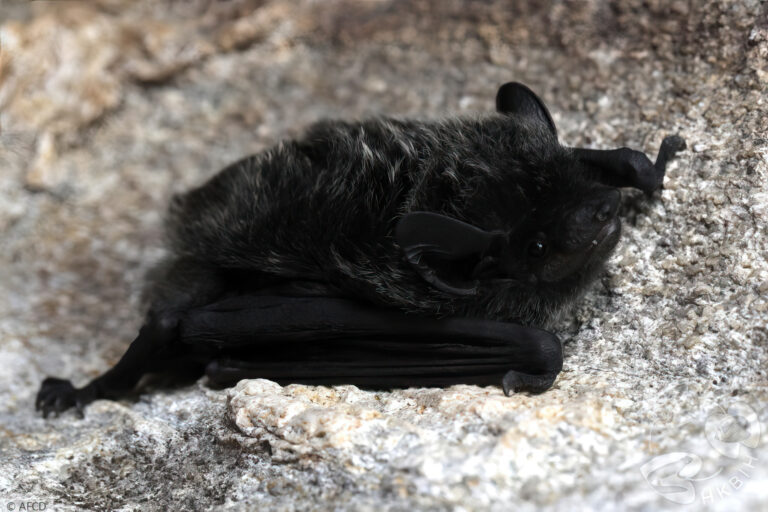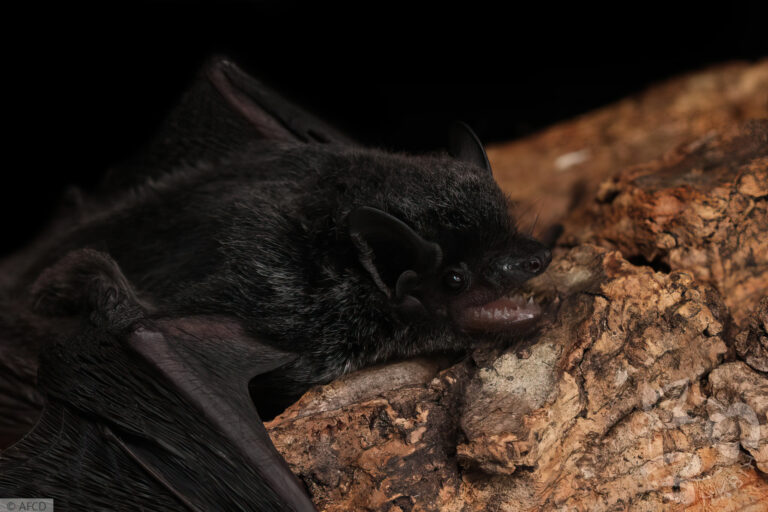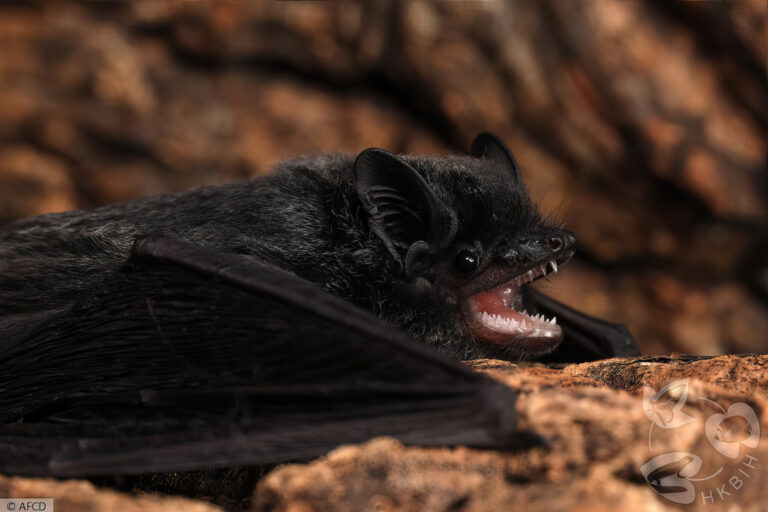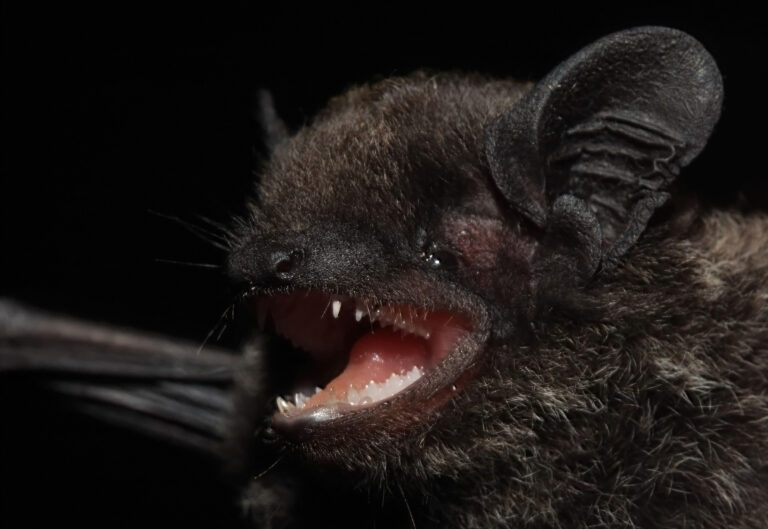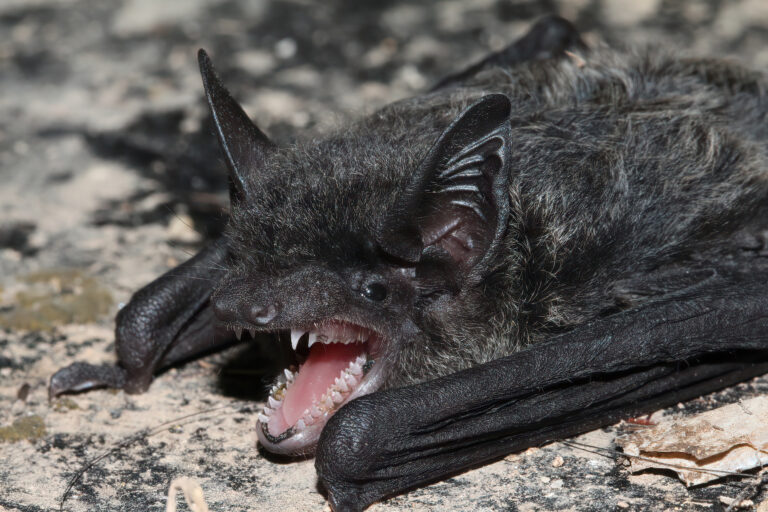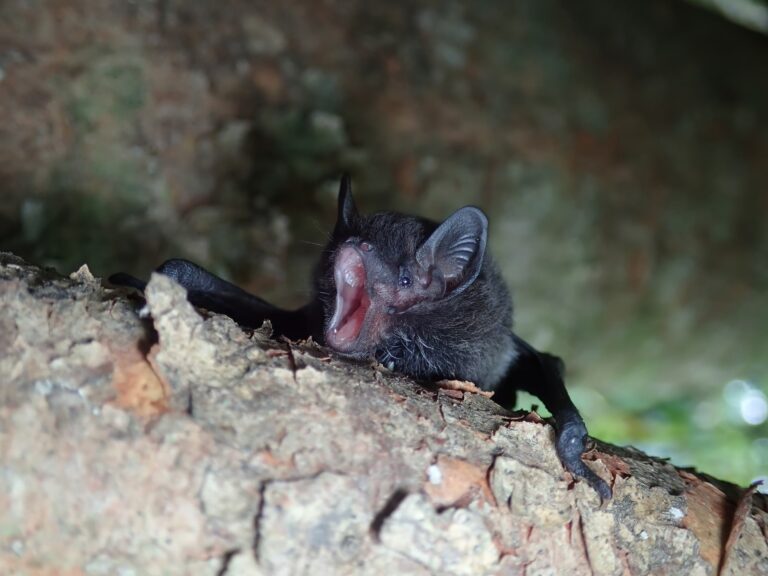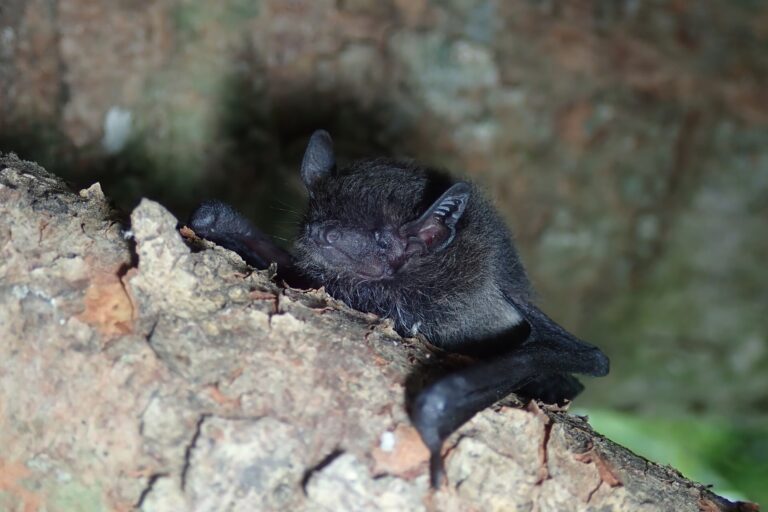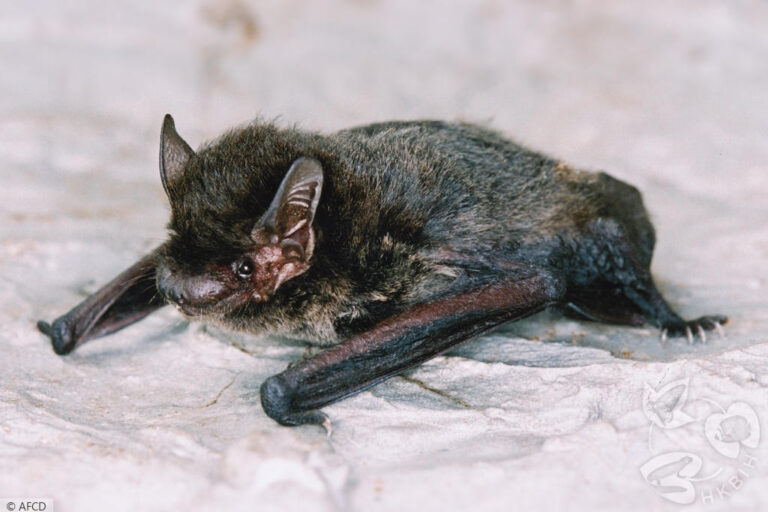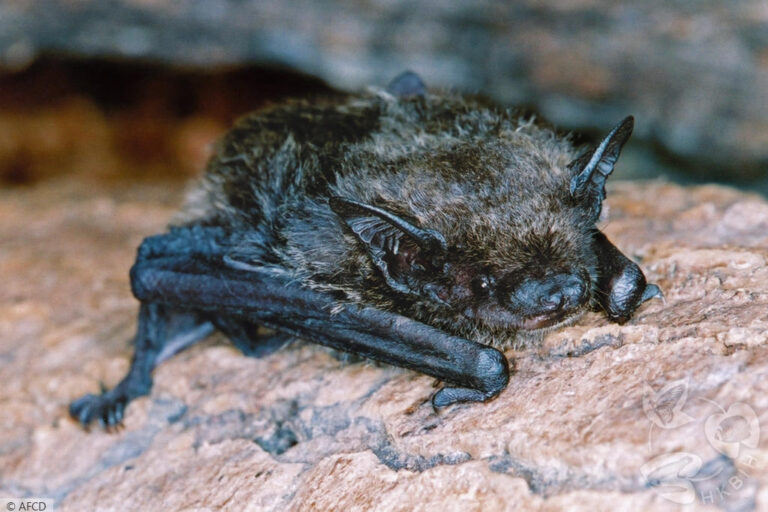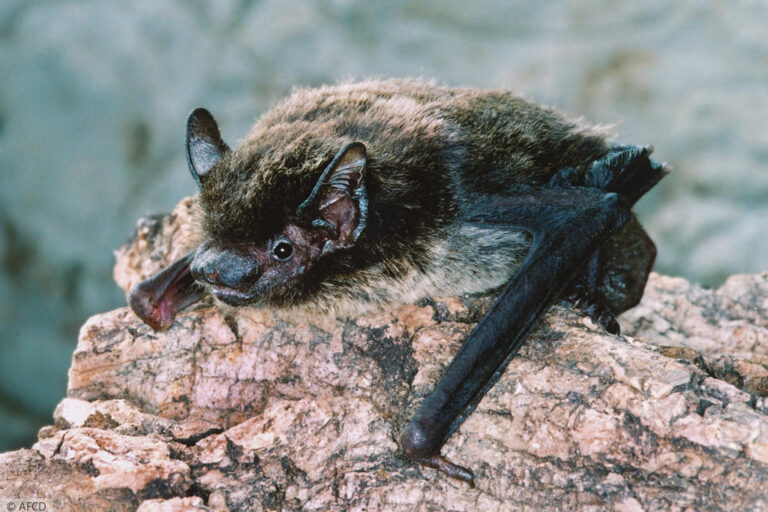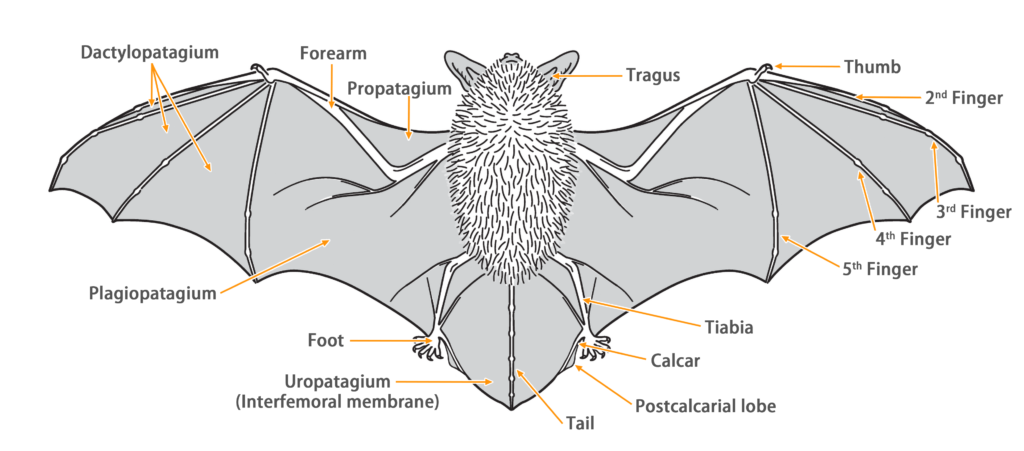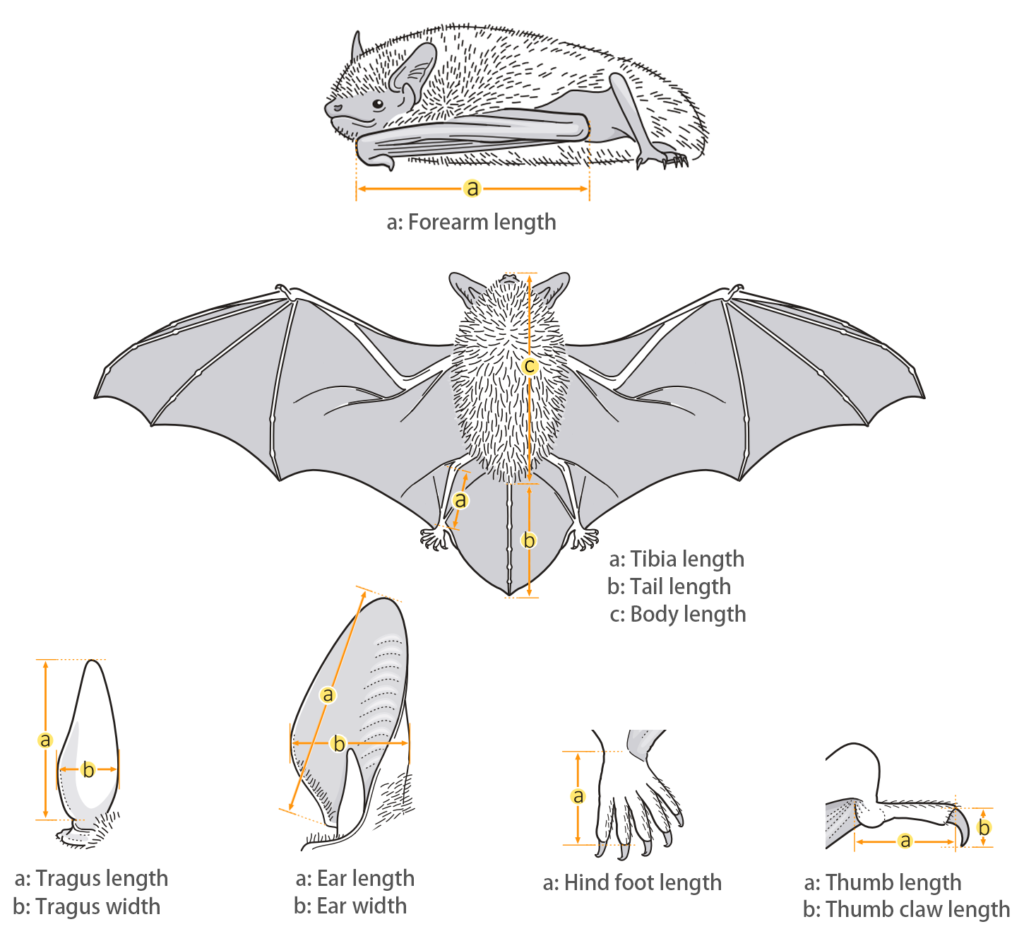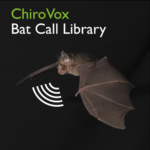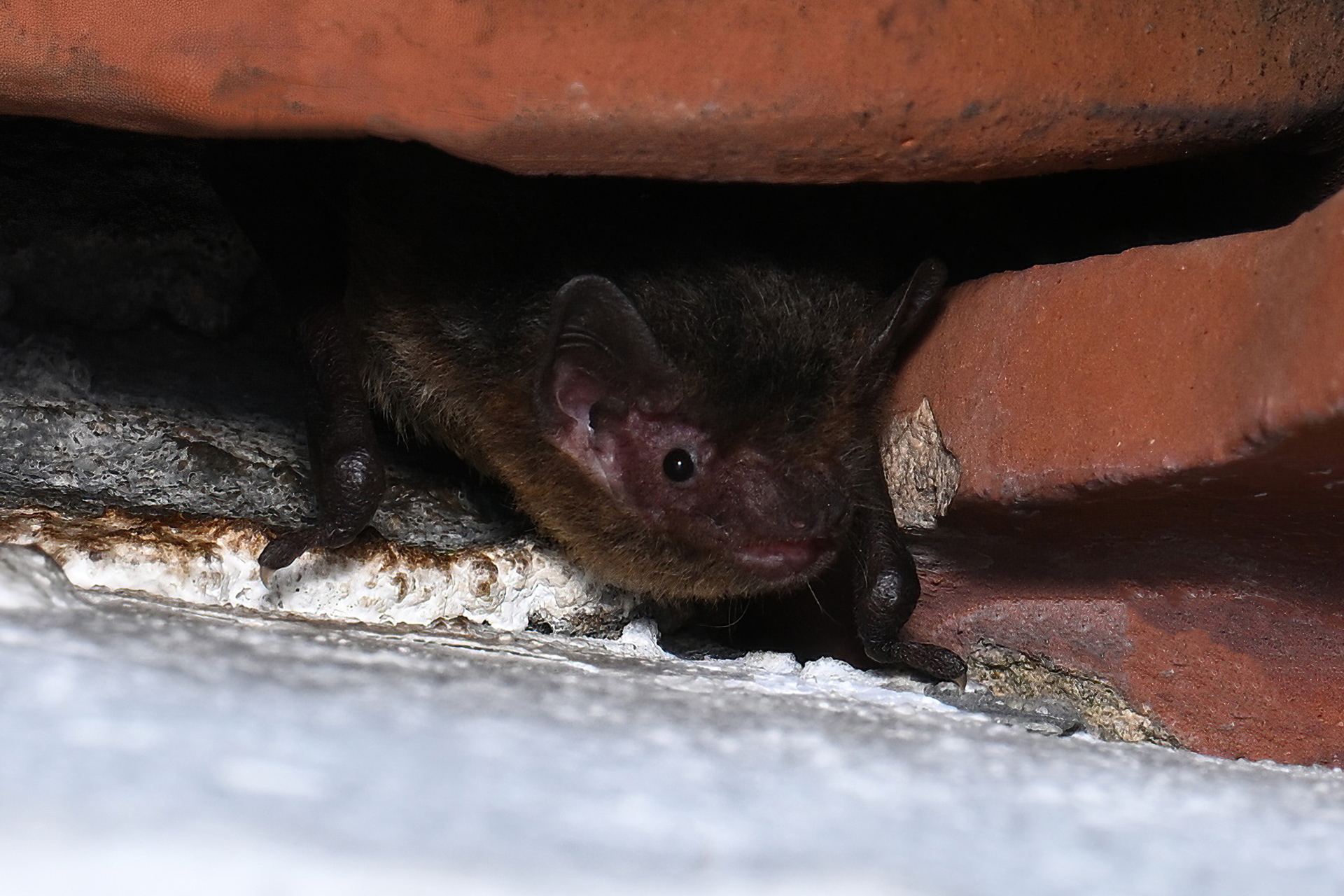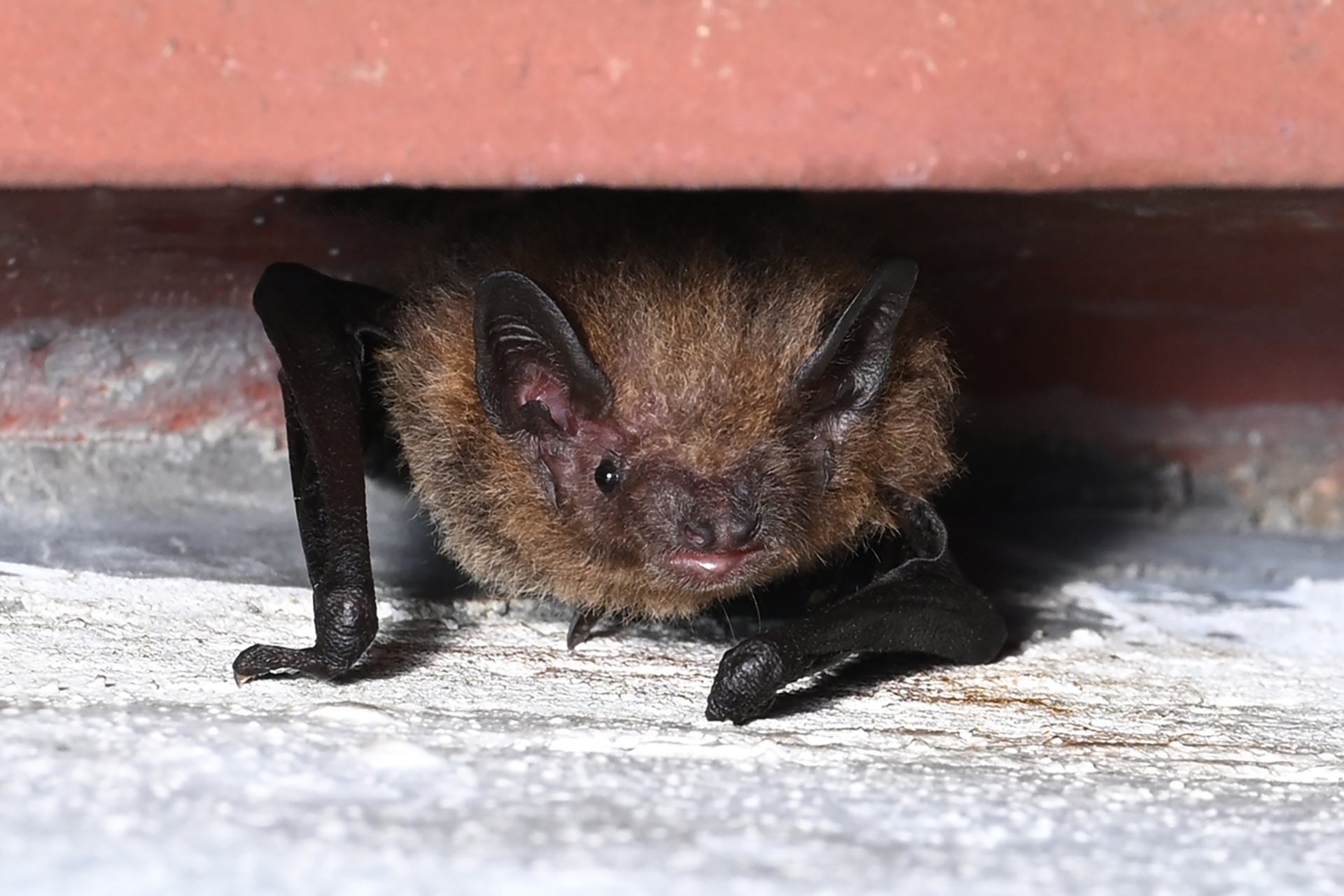- Hong Kong Bat Radar
- Chinese Pipistrelle (Hypsugo pulveratus)
Chinese Pipistrelle
Hypsugo pulveratus (Peters, 1871)
Taxonomy
| Family: | Vespertilionidae |
| Genus: | Hypsugo |
| Scientific name: | Hypsugo pulveratus (Peters, 1871) |
| Synonyms: | Pipistrellus pulveratus (Peters, 1871) |
| Common name: | Chinese Pipistrelle |
| Other name: | - |
| Remark: | - |
| Characteristics | |
| Color: | The fur is relatively long (5.5mm), with the dorsal fur being gray-black (base color being dark brown-black and tips being light golden-brown). The ventral fur is lighter, appearing dark gray (base color being gray-black and tips being greyish white). |
| Ear: | The ear pinna is slender and slightly triangular in shape, with relatively rounded and blunt tips. Both the ear pinna and tragus are dark gray to black in color. The tragus is thumb-shaped, wide and short, with a rounded and slightly forward-leaning tip, about 1/3 of the height of the ear pinna. |
| Head: | The muzzle is relatively narrow and dark gray to black in color. The eyes are relatively large and round compared to other local pipistrelles. |
| Limbs: | The hind foot are relatively small, with the wing membrane connecting to the base of toes. |
| Penis: | The penis is short (2.6-3.1 mm). The anterior end exhibits a slight swelling and appears dark brown, with sparse brown and white hairs. The hairs at the anterior end are noticeably longer. The tip of the baculum is rounded and non-forked. |
| Tail: | The tail is long and nearly completely enveloped by the interfemoral membrane. The tail is free for last two vertebrae (~ 3 mm). The calcar has narrow post-calcarial lobe. |
| Body measurements | |
| Size: | Small pipistrelle |
| Body: | 38.2 - 49.4 mm |
| Tail: | 32.0 - 38.0 mm |
| Ears: | 10.2 - 14.0 mm |
| Hind foot: | 4.7 - 8.1 mm |
| Forearm: | 32.0 - 37.0 mm |
| Weight: | 4.3 - 5.8 g |
| Wing morphology | |
| Wing span: | 0.232 m |
| Wing area: | 0.009 m2 |
| Wing loading: | 5.68 ± 0.73 N/m2 (Very low) |
| Aspect ratio: | 0.88 ± 0.13 (Low) |
| Tip-shape index: | 5.68 ± 0.04 (Low) |
| Reference: | Furey & Paul, 2016 |
Ecology
| Habitat: | Recorded to inhabit crevices in buildings, caves, and even found residing beneath air conditioners. |
| Habit: | Typically solitary or forms small colonies consisting of a few individuals for roosting. |
| Reproduction: | Local records indicate the presence of juvenile bats in mid-June, suggesting a breeding period occurring from May to June each year. Typically, they give birth to one or two offspring. |
| Hibernation: | They do not hibernate, but their activity levels vary based on weather temperature and food availability. |
| Flight: | They have a slow flying speed but exhibit excellent agility. However, their hovering flight ability and flight efficiency are relatively inferior, making them more suitable for short-distance flights. They tend to fly at higher altitudes compared to other local bat species, typically flying at a slow pace several meters to tens of meters above the tree canopy to forage. |
| Diet: | They are insectivorous bats, feeding on small to medium-sized insects such as mosquitoes, moths, and flying ants. Judging from their relatively lower frequency range (35-50 kHz), it is inferred that their prey items are larger compared to other bat species. |
Distribution
| Local: | The New Territory, Hong Kong Island and Lantau Island |
| Global: | Central, South-central & Southeast China, including Hainan and Matsu Islands, Central & East Myanmar, North Thailand, North & Central Laos, and North & Central Vietnam. (Moratelli et al., 2019) |
Local distribution map
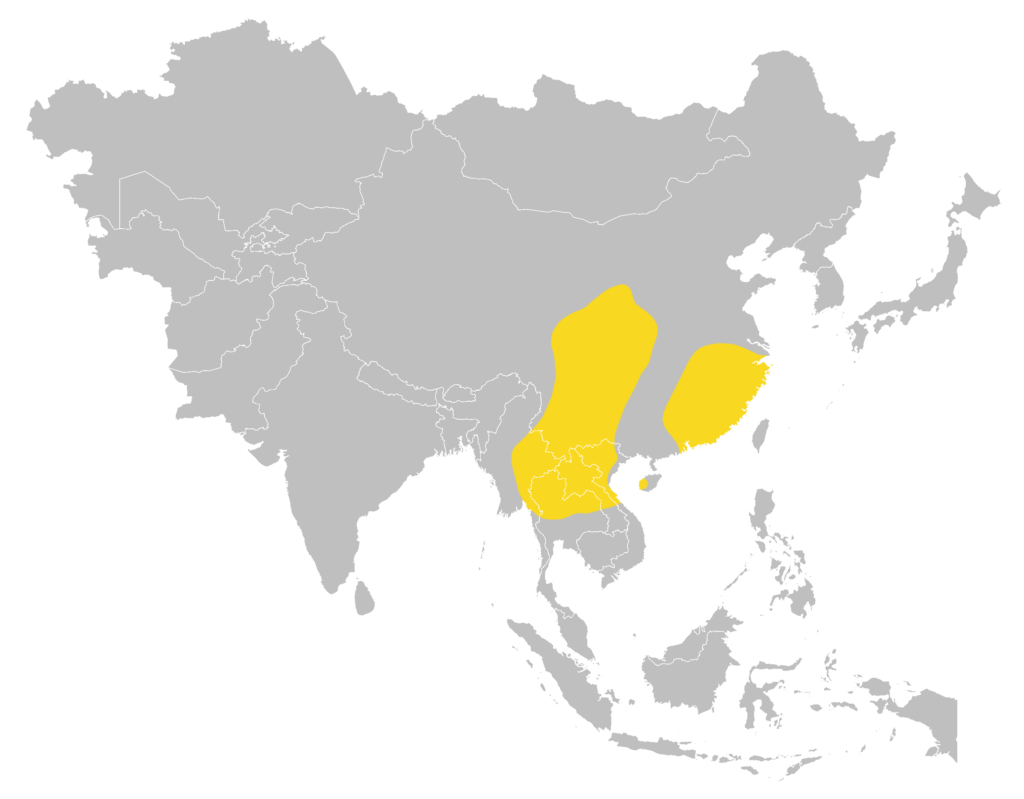
Global distribution map
(Moratelli et al., 2019)
Status and Conservation
| First record: | 1955 |
| Origin: | Native |
| Local status: | Rare (Shek & Chan, 2006) |
| National status: | Near threatened (Red List of China Vertebrates) |
| Global status: | Least concern (IUCN Red List) |
| Potential threat: | TBC |
Echolocation
| Parameter | Value |
|---|---|
| Call structure | QCF/FM |
| Duration | 2.10 ± 1.60 ms |
| Inter pulse interval | 58.30 ± 10.50 ms |
| Peak frequency | 42.40 ± 2.50 kHz |
| Start frequency | 75.90 ± 7.20 kHz |
| End frequency | 34.10 ± 1.00 kHz |
|
Region: |
Vietnam |
| Method: | Hand release |
| Reference: | Furey et al., 2009 |
| Parameter | Value |
|---|---|
| Call structure | FM |
| Duration | 1.80 - 2.60 ms |
| Inter pulse interval | - |
| Peak frequency | - |
| Start frequency | 82.70 - 89.20 kHz |
| End frequency | 38.50 - 39.00 kHz |
|
Region: |
Vietnam |
| Method: | Hand release & Flight tent |
| Reference: | Thong et al., 2021 |
Similar Species
Least Pipistrelle
Pipistrellus tenuis
Size:
The smallest among three.
Forearm:
25.0 - 31.0 mm
Color:
Short fur, with a uniformly brownish-black color on the back (slightly lighter at the tips).
Ears:
Triangular in shape, with a dark brown color.
Tragus:
Relatively slender, with a rounded and slightly forward-curved tip.
Snout:
Dark brown to grayish-black, with prominent lateral swellings on both sides.
Tail:
A slight protrusion (< 1 mm) at the tip.
Penis:
Relatively short in length (3.8 mm).
Japanese Pipistrelle
Pipistrellus abramus
Size:
Smaller than P. tenuis and similar to or smaller than H. pulveratus.
Forearm:
29.0 - 36.0 mm
Color:
Short fur, with a gray-brown color on the back (lighter gray-brown at the tips and darker brown at the base).
Ears:
Triangular in shape, with varying degrees of brown coloration.
Tragus:
Relatively slender, with a rounded and slightly forward-curved tip.
Snout:
Dark brown to grayish-black, with slight lateral swellings on both sides.
Tail:
A slight protrusion (< 1 mm) at the tip.
Penis:
A long and distinct penis (9.1 - 12.7 mm).
Chinese Pipistrelle
Hypsugo pulveratus
Size:
Larger than P. tenuis and similar to or larger than P. abramus.
Forearm:
32.0 - 37.0 mm
Color:
Long fur, with a dark brown-black color on the back (slightly lighter at the tips).
Ears:
Slender and triangular in shape, ranging from deep gray to black in color.
Tragus:
Relatively thick and short, with a wider base and a rounded and slightly forward-curved tip.
Snout:
Dark gray to black in color, with slight lateral swellings on both sides.
Tail:
The tail is free for last two vertebrae (~ 3 mm)
Penis:
The shortest penis (2.6 - 3.1 mm) among three.
Bibliography
Cheng, H. C., Fang, Y. P., & Chou, C. H. (2015 ). A Photographic Guide to the Bats of Taiwan (2nd ed.). Endemic Species Research Institute.
Furey, N. M., Mackie, I. J., & Racey, P. A. (2009). The role of ultrasonic bat detectors in improving inventory and monitoring surveys in Vietnamese karst bat assemblages. Current Zoology, 55 (5), 327-341.
Furey, N. M., & Racey, P. A. (2016). Can wing morphology inform conservation priorities for Southeast Asian cave bats?. Biotropica, 48(4), 545-556.
Ip, H.M. (2020). Personal conversation.
Jiang, Z. G., Jiang, J. P., Wang, Y. Z., Zhang, E., Zhang, Y. Y., Li, L. L., Xie, F., Cai, B., Cao, L., Zheng, G. M., Dong, L., Zhang, Z. W., Ding, P., Luo, Z. H., Ding, C. Q., Ma, Z. J., Tang, S. H., Cao, W. X., Li, C. W., Hu, H. J., Ma, Y., Wu, Y., Wang, Y. X., Zhou, K. Y., Liu, S. Y., Chen, Y. Y., Li, J. T., Feng, Z. J., Wang, Y., Wang, B., Li, C., Song, X. L., Cai, L., Zang, C. X., Zeng, Y., Meng, Z. B., Fang, H. X., & Ping, X. G. (2016). Red List of China’s Vertebrates. Biodiversity Science 24(5), 500‑551.
Moratelli, R., Burgin, C., Cláudio, V., Novaes, R., López-Baucells, A., & Haslauer, R. (2019). Vespertilionidae. In Mittermeier, R. A., & Wilson, D. E. (Eds.), Handbook of the Mammals of the World – Volume 9 Bats. (pp. 716-981). Lynx Edicions.
Shek, C. T. (2006). A Field Guide to the Terrestrial Mammals of Hong Kong. Friends of country park and cosmos book limited.
Shek, C. T., & Chan, C. S. M. (2006). Mist Net Survey of Bats with Three New Bat Species Records for Hong Kong. Hong Kong Biodiversity, 11, 1-7.
Thong, V. D., Denzinger, A., Sang, N. V., Huyen, N. T. T., Thanh, H. T., Loi, D. N., Nha, P. V., Viet, N. V., Tien, P. D., Tuanmu, M. -N., Huang, J. C. -C., Thongphachanh, L., Luong, N. T., & Schnitzler, H. U. (2021). Bat diversity in Cat Ba Biosphere Reserve, Northeastern Vietnam: a review with new records from Mangrove ecosystem. Diversity, 13(8), 376.
Tong, C. P. (2016). Distribution and preference of landscape features and foraging sites of insectivorous bats in Hong Kong urban parks. [Master’s thesis, The University of Hong Kong].
Hong Kong Bat Radar. (18/05/2025). A Field Guide to Bats of Hong Kong: Chinese Pipistrelle (Hypsugo pulveratus ). https://hkbatradar.com/en/hypsugo_pulveratus
